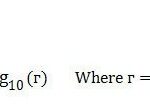From the Transport to the Physical Channel in LTE
- Transport channels are then mapped on the physical channels which are sent over the air interface
- A CRC is calculated and appended to each TB. It allows the receiver to detect errors. It is used by retransmission mechanisms like H-ARQ
- Depending on the Transport Format and the radio quality, the TB is coded and interleaved.
- The H-ARQ is a process running in the UE and in the eNodeB to allow a fast retransmission in case of errors.
- The resulting bit sequence is modulated and mapped on the sub-carriers of the Resource Block used for the transmission (one or several RBs).
- The data are modulated and mapped on the sub-carriers.
- The basic time-frequency unit is the Resource Block.
From Transport to Physical Channel in LTE
In LTE, the data you send or receive goes through multiple layers before reaching its final destination. The process starts with the transport channel, which carries data between the MAC layer and the physical layer, ensuring it’s ready for transmission over the air interface.
Transport Channel Mapping to Physical Channel
Once the data reaches the transport channel, it needs to be mapped to a physical channel for actual transmission. The MAC layer handles this mapping process, converting transport blocks into formats that can be sent over the physical layer. For example, the Dedicated Transport Channel (DCH) could be mapped to a Physical Uplink Shared Channel (PUSCH) or a Physical Downlink Shared Channel (PDSCH) depending on whether data is being sent or received.
Role of Physical Channels
Physical channels handle the actual radio transmission. These include channels like the PUSCH (Physical Uplink Shared Channel) for sending data from your device to the network and the PDSCH (Physical Downlink Shared Channel) for receiving data from the network. The physical layer ensures that the data is transmitted through the air, adjusting for network conditions like signal strength and interference.
Process Flow in LTE Transmission
Here’s how the process works: The MAC layer splits the data into smaller chunks and places it in transport channels. Then, the data is mapped onto physical channels, where the transmission occurs. The physical layer uses various techniques like modulation and coding to ensure data is sent reliably to and from your device.


